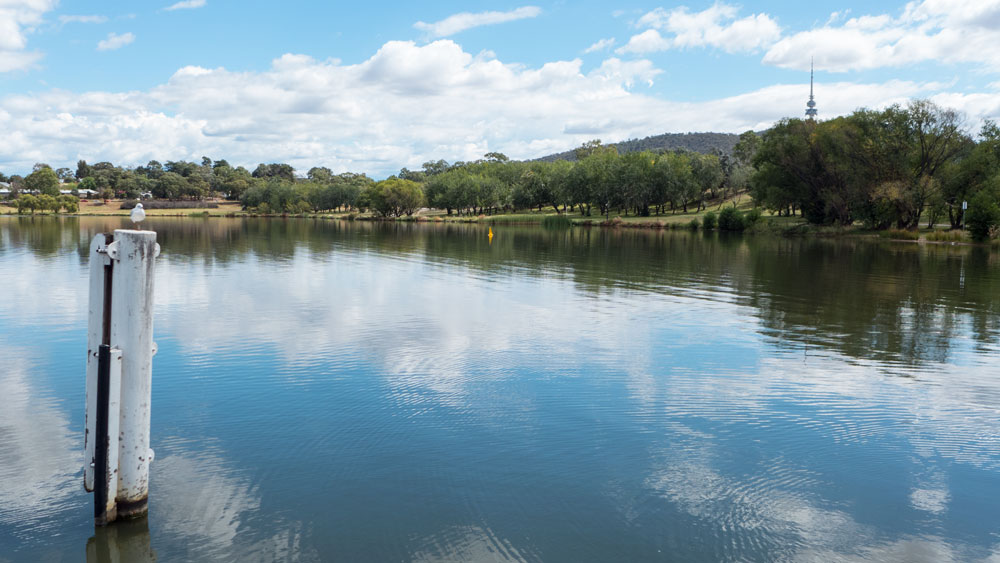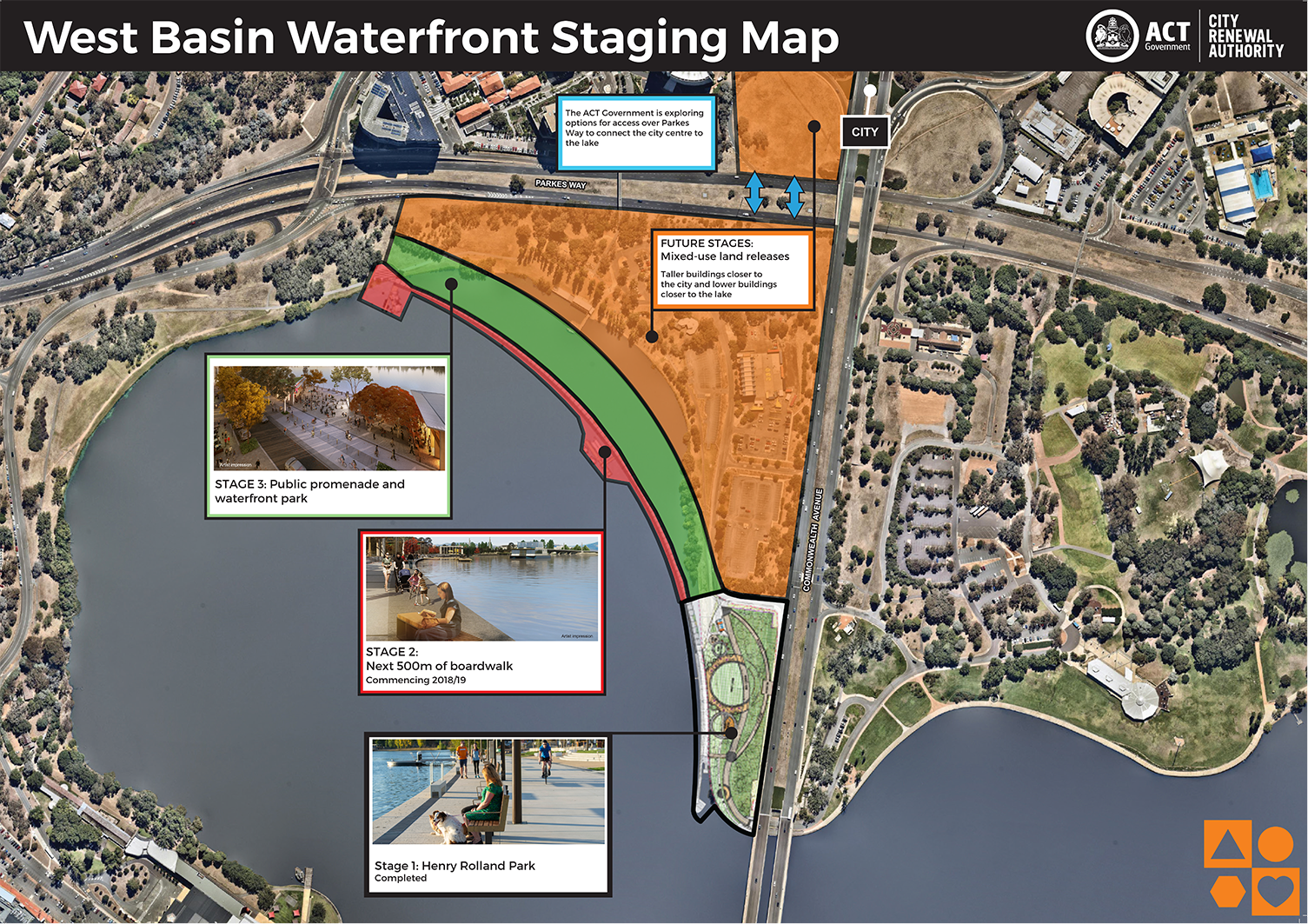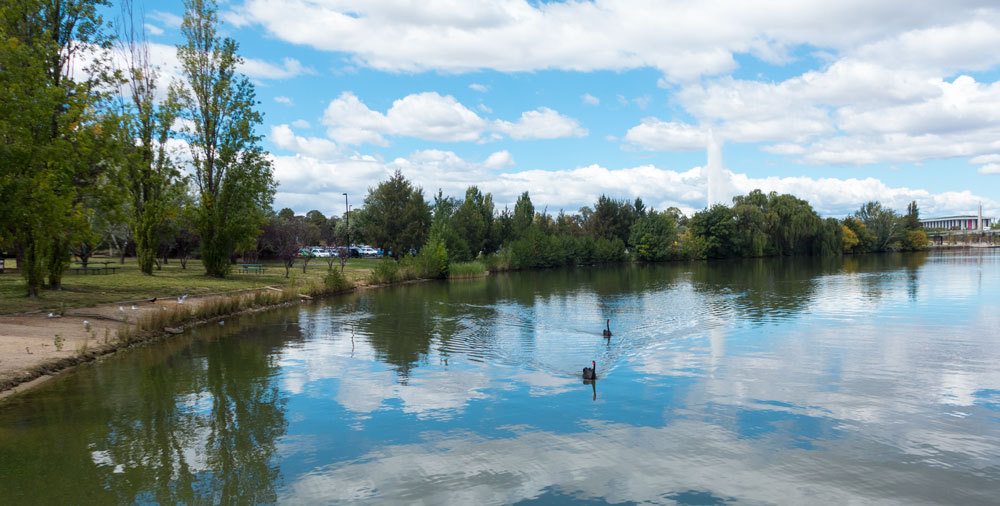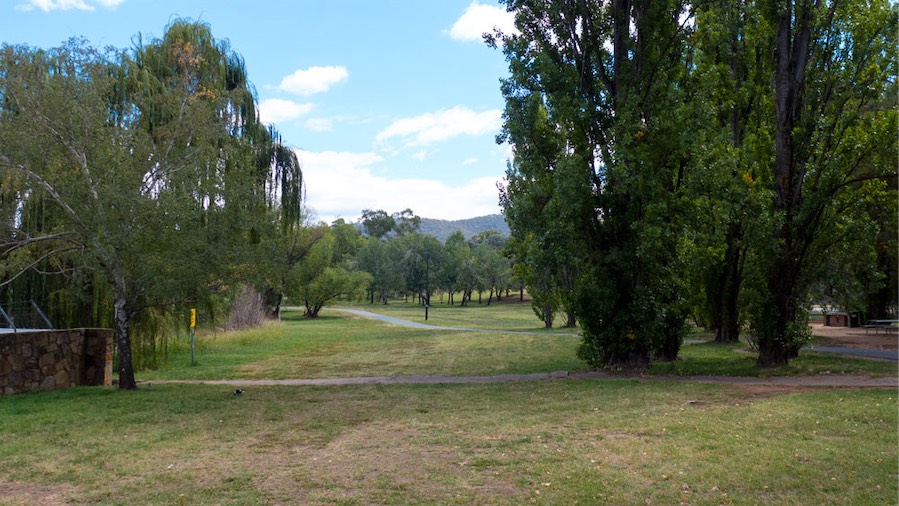The City Renewal Authority uses spin rather than facts

In November, Juliet Ramsay of the Lake Burley Griffin Guardians presented a paper to the Australian ICOMOS (International Council on Monuments and Sites).
Her paper outlined the extreme challenges facing the conservation of the Lake Burley Griffin and the lakeshore landscapes – with the focus on what is being proposed for the West Basin by the ACT government and the National Capital Authority.
The paper presents the much-wanted factual background to the West Basin.
This should allow residents to see through the spin, alternative facts and misrepresentations that have become commonplace by agencies such as the City Renewal Authority, the NCA and ACT politicians of all colour who have become desperate to justify the concreting over of this lake foreshore.
To download a pdf of the article – click here.
This will take you to the website for the Lake Burley Griffin Guardians – and on the page that opens is a link to download and read the full article.

It is a must read. It needs to be circulated to others (individuals and community groups) so that more people get to understand what is happening in their name.
Residents need to take actions to see this lakeside green space saved – and then enhanced for future generations.

For a preview – here is Juliet Ramsay’s abstract introduction and then her concluding statements:
Extreme Challenges Facing the Conservation of the Lake Burley Griffin and the Lakeshore Landscape — a Community Parkland Space
Abstract
In the 21st century, community parkland landscapes have become vulnerable to exploitation by political financial interest groups. The associated values that are under threat are – environmental qualities, views and vistas, significant landscape experiences, community health and recreation resources, and particularly, intergenerational equity.
Using Lake Burley Griffin as a case study, this presentation explores how 21st century land economics and developer-driven strategies have overridden and unravelled expert urban planning and design while also ignoring well-supported heritage values. The paper commences with the story of Lake Burley Griffin and its lakeshore landscape and covers a summary of the lake’s planning and development processes and the community advocacy undertaken, including its disheartening outcomes. It explores the promulgation of false spin and ignores community concerns for a government program that promotes development at the expense of the ethos of heritage.
The paper touches upon some suggestions as to how community members and the wider heritage discipline could counteract these powerful and damaging forces to strengthen and influence cultural capital in order to protect community parkland spaces.
Conclusion
We are now witnessing the undoing of the special qualities of the national capital created in the 20th century. The ACT government, reliant on land sales to augment its revenue, is focusing on the sale of greenfield areas, including parklands in the city area.
The damaging city development proposals with their roots in the 1990 National Capital Plan show no respect for urban heritage planning, the effects of modern climate change on the fragile lake shore environment, the ensuing heat bank and traffic chaos from excessive development, the social need for intergenerational equity or the recreational needs of rapidly increasing numbers of apartment dwellers.
West Basin should have had protection under the Designated Area planning provisions of the National Capital Plan and the National Capital Open Space System, but this has not saved the lake or parklands and neither have its heritage values. Lake Burley Griffin is loved by Canberrans and visitors, but development on its shores and appropriation of its waters are calamities. Although urban density may need to increase in Canberra, it should not be at the loss of strategic and valued community parklands which, together with Lake Burley Griffin, forms the designed cultural landscape of national significance.
The Lake Burley Griffin and Lakeshore Landscape example indicates that heritage listings and legislation in Australia do not appear to be effective in combating development proposals that are destructive of significant heritage.
Heritage groups now need to form and to do battle on behalf of heritage, but wins for heritage are not guaranteed. Basic principles such as the need for intergenerational equity and the precautionary principle are also being ignored. This low ebb for landscape heritage needs a new approach. Education is perhaps a Proceedings of the Australia ICOMOS Cultural Landscape Diversity & the Implications for Management Symposium 2018 100 seed for change if understanding the value of cultural landscapes could be promoted to school children. The topic could be included into existing programs such as environmental education.
A troubling concern noted by the Guardians is that few Canberrans and perhaps fewer Australians in general realise that the shoreline of Lake Burley Griffin, their capital, is destined for urban development. Such a major reuse of national landscape and lake water, zoned as nationally significant, should have elicited not only broad national, but also broad international condemnation. However, possibly due to the “secrecy” associated with the development rezoning and speed of amendments to the National Capital Plan, few people are aware that it is actually happening.
Walter Burley Griffin is famously quoted from an article in “The New York Times”, June 2, 1912 (Griffin D, 2008:21): “I have planned a city like no other city in the world”.
In 2017, Heather Henderson, daughter of Prime Minister Robert Menzies, expressed the painful feelings of most Canberrans when writing that “if we keep going, Canberra will end up looking like any other city”. Henderson further noted: “It is sad, distressing, agonising (no word is too strong) to be a witness to the destruction of Canberra… Who, in their right mind, could prefer concrete and coffee shops and (greatest horror of all) blocks of flats, to calm beautiful water and trees on the shore and mountains in the distance?” (Henderson 2017).

This destruction of the lake foreshore is happening in your name by politicians you have elected – and who come up for election again in October this year. It is time to ask each of them where they stand on this.
To download a pdf of the full article – click here.
——————————
This article was originally published online with City News
Paul Costigan is an independent commentator and consultant on the visual arts, photography, urban design, environmental issues and everyday matters.